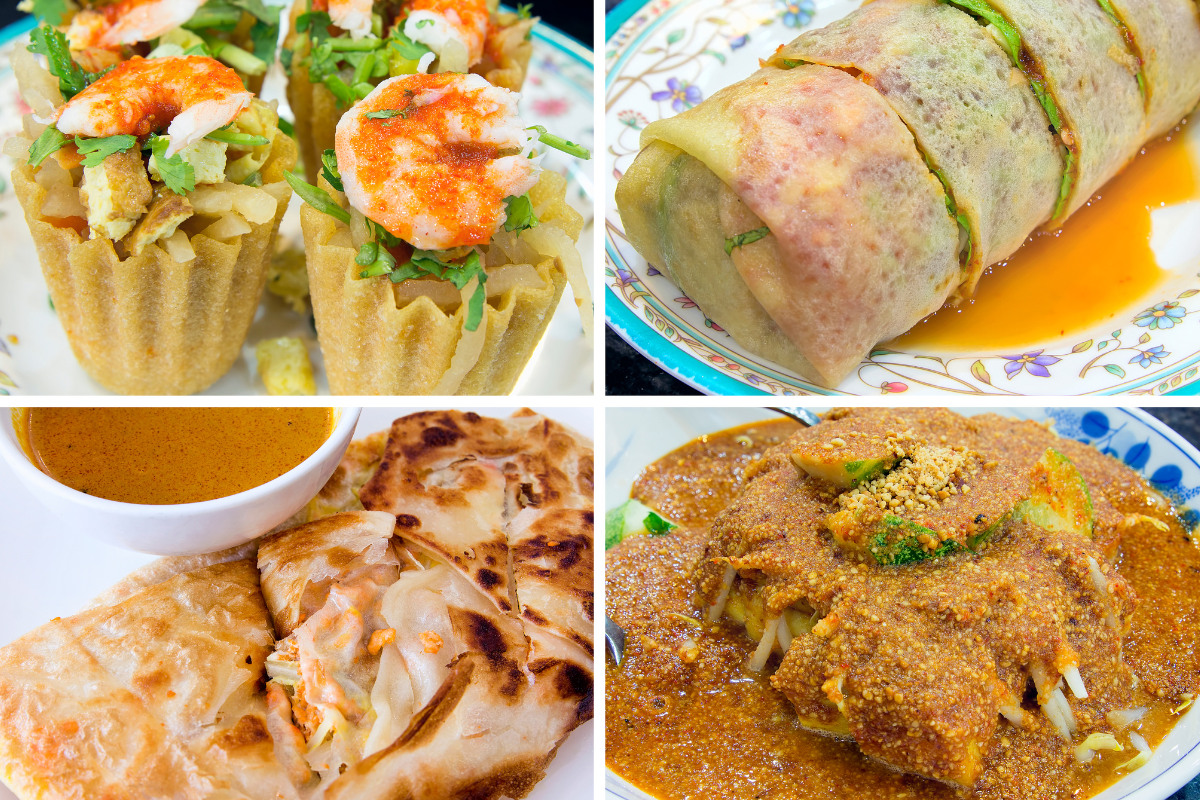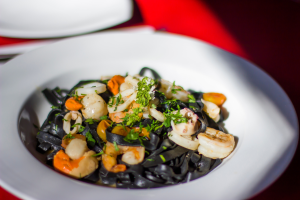Singapore is nothing short of a food paradise. In a city-state smaller than many global capitals, you’ll find an astonishingly diverse array of flavours that reflect its rich cultural tapestry. Chinese, Malay, Indian, Peranakan, and even Western influences blend seamlessly on Singaporean plates, creating dishes that are both comforting and exhilarating. For locals, food is more than just sustenance; it’s a way of life, a reason to gather, celebrate, and connect. For visitors, sampling local cuisine is the perfect way to understand the soul of the city.
Whether you’re strolling through bustling hawker centres, exploring quaint neighbourhood eateries, or hunting down the latest fusion restaurant, Singapore offers something for every palate. In this guide, we’ll take you through the must-try dishes, the best spots to sample them, hidden gems, dining etiquette, and even modern twists on traditional favourites.
Iconic Dishes You Can’t Miss
When it comes to Singaporean cuisine, certain dishes have earned iconic status. These are the flavours that define the city, and trying them is essential for any food lover.
Hainanese Chicken Rice
Often described as Singapore’s national dish, Hainanese chicken rice is deceptively simple yet deeply satisfying. Poached chicken is served with fragrant rice cooked in chicken stock, accompanied by a trio of sauces: chilli, ginger, and dark soy. The dish originated from Chinese immigrants from Hainan and has evolved into a local favourite available everywhere from hawker stalls to high-end restaurants. The secret lies in the tenderness of the chicken and the aromatic, slightly oily rice that soaks up every drop of flavour.
Chilli Crab
For a messy, indulgent feast, nothing beats chilli crab. Fresh mud crabs are stir-fried in a tangy, sweet, and spicy tomato-chilli sauce. Served with fried or steamed buns for dipping, this dish is perfect for sharing. It was created in the 1950s and has since become a symbol of Singapore’s bold, unapologetic flavours. Don’t worry about getting sauce on your fingers – it’s part of the experience.
Laksa
Laksa is a spicy noodle soup that marries Chinese and Malay flavours, often referred to as Peranakan cuisine. Its rich coconut milk-based broth, infused with lemongrass and dried shrimp, wraps around thick rice noodles and plump prawns. Some variations include chicken or fish cake, but no matter the version, laksa is a comforting, aromatic dish that is both warming and flavourful.
Satay
Skewers of marinated meat, usually chicken, beef, or lamb, grilled over charcoal and served with a peanut sauce, satay is a social dish. Often accompanied by cucumbers, onions, and rice cakes, it’s perfect for sharing at hawker centres or night markets. The smoky aroma and sweet-savory glaze are irresistible, making it a staple at gatherings and outdoor food events.
Char Kway Teow
This stir-fried noodle dish is a street food legend. Flat rice noodles are wok-tossed with egg, Chinese sausage, bean sprouts, prawns, and sometimes cockles, all infused with a smoky “wok hei” flavour unique to Singapore. Char Kway Teow is indulgent, hearty, and a true testament to the skill of hawker chefs who cook over blazing flames.
Nasi Lemak
Although originally Malay, Nasi Lemak has been embraced as a national treasure. Fragrant coconut rice is paired with sambal (a spicy chilli paste), fried anchovies, peanuts, boiled eggs, and cucumber slices. Often accompanied by fried chicken or rendang, it’s a breakfast dish that’s rich in flavour and texture, offering a deliciously satisfying start to the day.
Best Hawker Centres and Food Streets
Singapore’s hawker centres are more than just eating spots – they’re cultural institutions. Here, you can enjoy authentic local dishes at affordable prices, all in one bustling location.
Lau Pa Sat
Located in the heart of the CBD, Lau Pa Sat is famous for its satay street that comes alive in the evenings. Surrounded by colonial-era architecture, this historic food centre offers a mix of traditional hawker fare and international options, perfect for an immersive culinary experience.
Maxwell Food Centre
A favourite among locals and tourists alike, Maxwell Food Centre in Chinatown is a hub for classic dishes like Hainanese chicken rice, laksa, and fish soup. Tian Tian Hainanese Chicken Rice is a must-visit stall, famous for its tender chicken and aromatic rice that consistently draw long queues.
Chinatown Complex
Home to one of the largest collections of hawker stalls in Singapore, Chinatown Complex is perfect for exploring a variety of dishes in one place. From dim sum to noodles, it offers authentic flavours at wallet-friendly prices.
Tiong Bahru Market
A charming blend of old and new, Tiong Bahru Market combines traditional hawker stalls with modern café culture. It’s a great place to try breakfast favourites like Nasi Lemak or Lor Mee, all while soaking in the neighbourhood’s laid-back vibe.
Other notable mentions include Old Airport Road Food Centre, Newton Food Centre, and East Coast Lagoon Food Village, each offering their own specialties and unique atmospheres.
Hidden Gems and Local Favourites
While hawker centres are fantastic, some of Singapore’s best food experiences come from hidden gems. Local favourites often involve smaller, family-run eateries where recipes are handed down through generations.
In neighbourhoods like Ang Mo Kio, Bedok, or Toa Payoh, you’ll find humble stalls selling dishes such as homemade laksa, traditional bak kut teh (pork rib soup), and freshly steamed buns. These spots may lack the fanfare of tourist-heavy centres, but the flavours are unparalleled, often perfected over decades.
Casual cafés are also joining the scene, combining local flavours with contemporary dining. Think pandan-flavoured desserts, gula melaka (palm sugar) beverages, or even modern takes on curry laksa. The joy of discovery lies in wandering off the beaten path and letting your taste buds guide you.
Eating Etiquette and Tips
Singaporeans take their food seriously, and understanding a few local customs will enhance your experience.
- Queueing is Normal – Popular stalls often have lines, and it’s considered rude to cut in. Patience is part of the adventure.
- Shared Tables – At busy hawker centres, sharing tables with strangers is common. Don’t be shy; it’s part of the communal experience.
- Ordering Like a Local – Many stalls offer combo meals or set portions. If unsure, ask for recommendations or follow what the locals are ordering.
- Handling Messy Foods – Dishes like chilli crab or satay are meant to be eaten with your hands. Napkins are essential, and don’t stress about a little mess.
By following these simple tips, you’ll not only enjoy the food but also appreciate the culture surrounding it.
Modern Twists and Fusion Cuisine
Singapore’s culinary scene is constantly evolving, and modern chefs are creatively reinterpreting traditional dishes.
At contemporary restaurants, you might find chilli crab pasta, laksa-inspired risotto, or gourmet satay with artisanal peanut sauces. Cafés serve pandan-infused cakes, bubble tea with exotic flavours, and local coffee blends that pay homage to traditional kopi (coffee) culture.
These modern twists offer a playful nod to heritage while appealing to a global palate. They’re perfect for those who want to enjoy classic flavours with a contemporary touch.
Conclusion
Exploring Singapore’s food scene is an adventure in itself. From iconic dishes to hidden gems, from hawker centres buzzing with energy to sleek modern cafés, every meal tells a story. Food here is more than flavour – it’s history, culture, and community wrapped up on a plate.
For locals, it’s a reminder of home and heritage. For visitors, it’s a delicious gateway to understanding the city’s diverse identity. To truly immerse yourself, plan your food journey by region, dish type, or even time of day. Start with breakfast favourites like Nasi Lemak, wander through hawker centres for lunch, enjoy satay in the evening, and discover hidden gems along the way.
In Singapore, every bite is a chance to experience culture, every stall a story, and every meal an unforgettable memory. So grab a fork, a spoon, or even your hands – and dive in. The city’s culinary treasures are waiting for you.



